Japan Travel: Meiji Shrine
L’Era Meiji
Il Periodo Meiji (明治時代 Meiji jidai, “periodo del regno illuminato”) è uno dei momenti storici più famosi del Giappone. Si espande dal 23 ottobre 1868 sino al 30 luglio 1912 e comprende i 44 anni di regno dell’Imperatore Matsuhito.

photo credit: Wikipedia
A seguito della caduta dello shōgunato di Tokugawa Yoshinobu, cominciò l’era dell’imperatore Meiji, il primo dotato di potere politico. E’ proprio durante questi anni che si incominciò a modificare la struttura politica, sociale ed economica del Giappone basandosi sul modello occidentale.
A seguito della morte di Tokugawa Ieyasu nel 1866, fu nominato suo successore Tokugawa Yoshinobu, che rimase al potere pochi mesi, fino al novembre 1867, lo shōgun presentò le dimissioni e cedette i suoi poteri alla corte. Nel gennaio 1868, le truppe di Tokugawa furono sostituite a Kyoto attraverso un colpo di stato. Ed è proprio in questo periodo che comincia la Restaurazione Meiji che restituì il potere all’imperatore dopo secoli di dominio degli shōgun.

photo credit: Wikipedia
La prima azione esercitata dal nuovo governo Meiji fu quella di dare qualche privilegio in più alla classe dei samurai, rimasta insoddisfatta dal regime precedente. In seguito ai numerosi contrasti nel 1869 i daimyō furono nominato governatori dei loro feudi. Tuttavia questi ultimi vennero soppressi nel 1871, permettendo la centralizzazione “formale” del potere e il rinforzo dell’istituzione imperiale. Non tutti approvarono la rinuncia del proprio feudo, ma per mantenere ordine e stabilità, il governo persuase i daimyō con promesse di forti ricompense.
Assieme a questo compromesso, il governo si accordò anche con la classe samurai, approvando una legge che consentiva loro di svolgere qualsiasi occupazione nel campo degli affari e nella pubblica amministrazione (le più gettonate erano l’organo istituzionale di polizia e l’esercito imperiale). A seguito di ciò, il mantenimento della classe dei samurai venne assunto dal governo centrale, elargendo anche remunerazioni nei loro confronti.
In questo nuovo stato, l’immagine dell’imperatore diveniva sempre più significativa e nel giugno 1869, con il “giuramente della Carta” a favore dell’imperatore Meiji, nacque la prima costituzione. Qui venivano enunciati i pieni poteri del governo centrale, anche se le decisioni politiche del paese erano affidate ancora ad un governo oligarchico.
Fino al 1881, il regime governò in modo autoritario con nessuna opposizione da parte della classe dominante, ma è in questo anno che scoppiò una grande crisi. Qui, con una richiesta all’imperatore, si invocò il desiderio di trasformare il governo in forma parlamentare.

photo credit: Wikipedia
Nonostante le difficoltà, il periodo Meiji rimane ancora una delle ere più importanti e con più cambiamenti della storia Giapponese. E’ proprio qui che si gettarono le basi per l’odierno governo del paese del Sol Levante.
Il tempio Meiji
Situato nel cuore di Tokyo e circondato da una foresta naturale e urbana, il Meiji-Jingu è una perla del culto shintō e uno dei santuari più simbolici di della città.


Situato nel parco di Yoyogi, a Shibuya, la struttura fu completata nel 1920, in onore dell’imperatore Meiji (1852 – 1912) e della sua sposa Shôen (1849 – 1914), fu vittima dei bombardamenti durante la Seconda Guerra Mondiale, ma ricostruito completamente poco dopo. Questa è una grande dimostrazione di riconoscenza giapponese verso questo imperatore, e l’esempio più lampante è proprio l’enorme parco che circonda questo luogo di culto, con più di centomila alberi inviato dagli abitanti di tutto l’arcipelago in onore della memoria di questo imperatore.
Per accedere al santuario, tuttora in attività, bisogna attraversare il grande bosco circostante e passare sotto il magnifico Torii in cipresso. Prima di poter entrare nei cortili e negli edifici sacri, bisogna rispettare alcune regole di etichetta, come ad esempio la purificazione del corpo con l’acqua e il saluto al Torii.

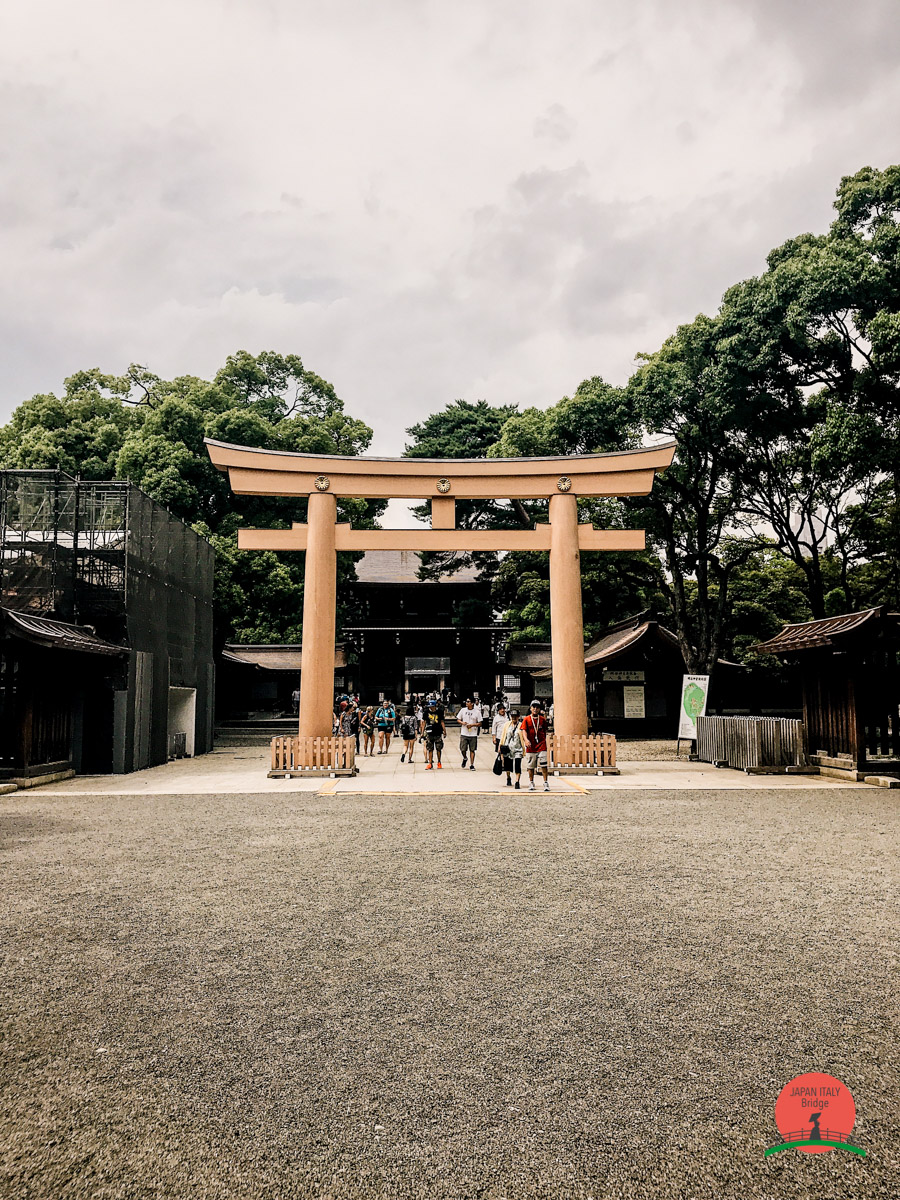
E’ incredibile come dopo aver passato la grande porta Torii, il rumoroso viavai di Tokyo sparisce e viene sostituito dai suoni tranquilli della foresta e dalle folte chiome arboree. Qui i visitatori del tempio possono prendere parte alle tipiche attività shintoise, come fare offerte nell’area principale, comprare porta fortuna e amuleti, o scrivere un vostro desiderio sulle famose tavolette ema. Non è raro infatti trovare persone di tutte le età che acquistano queste tavolette in legno e che esprimono il proprio desiderio scrivendolo proprio su questi supporti. Una volta espresso il vostro desiderio o augurio, gli ema vengono appesi su un supporto centrale nel tempio e successivamente recuperati dai preti che invieranno poi i messaggi ai Kami (dei).
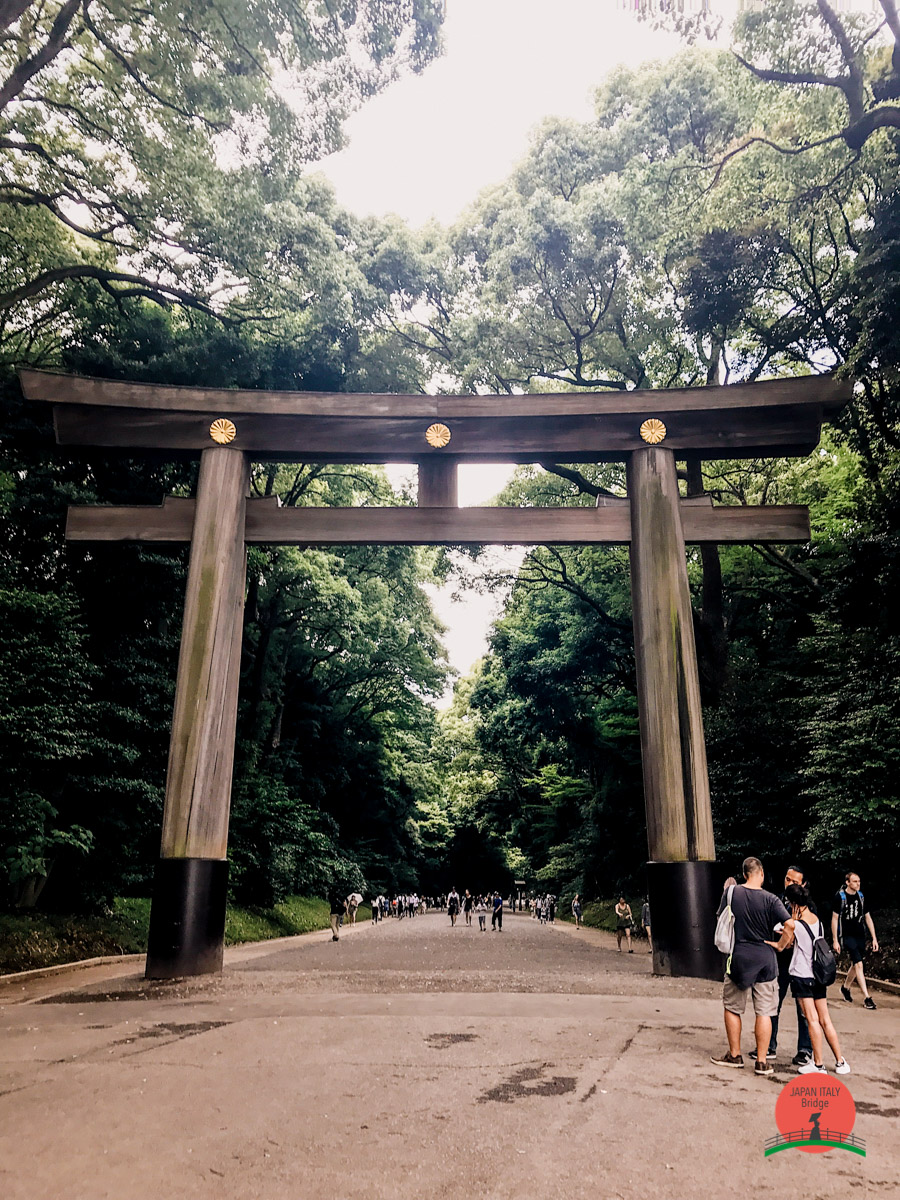
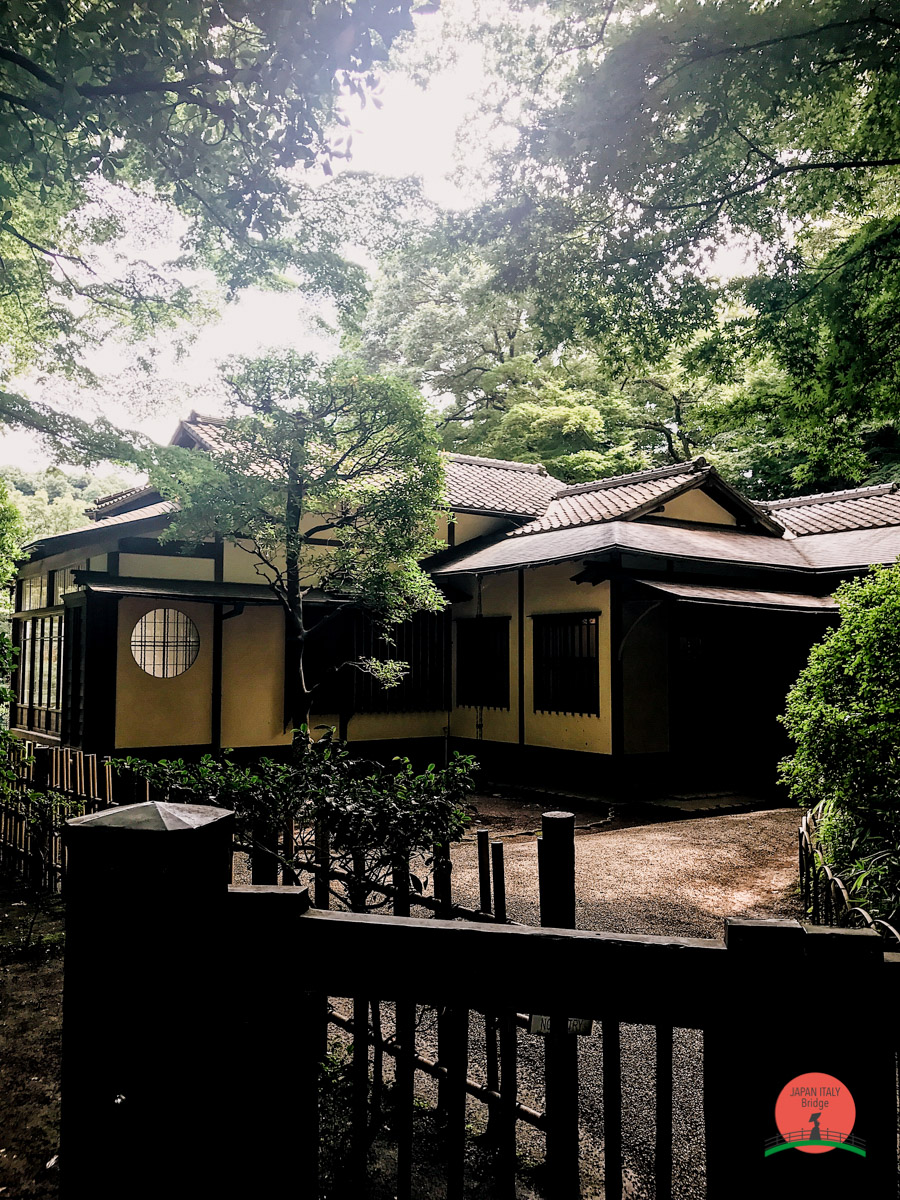
Il Meiji Jingu è uno dei templi più popolari del Giappone e proprio in questo periodo dell’anno, subito dopo l’Omisoka, accoglie regolarmente più di tre milioni di visitatori per l’Hatsumode, le prime preghiere dell’anno.
Nella parte più a nord delle terre legate al tempio, i visitatori possono trovare la casa dei tesori del Meiji Jingu, costruita un anno dopo che il tempio fu aperto. In questo luogo sono racchiusi molti oggetti personali legati all’Imperatore e all’imperatrice, inclusa la carrozza che ha accompagnato l’imperatore alla dichiarazione formale della costituzione Meiji nel 1889.


Una grande area della parte sud delle terre del tempio è occupata dai Giardini Interni, i quali richiedono un piccolo costo di entrata. Tuttavia questi giardini sono particolarmente popolari verso la metà di giugno per ammirare i fiori d’Iris in tutto il loro splendore, assieme alle famosissime gru giapponesi. E se avrete abbastanza pazienza, potrete avere l’occasione di vedere un piccolo stormo di questi fantastici volatili attraversare il grande lago, uno spettacolo unico e magico.
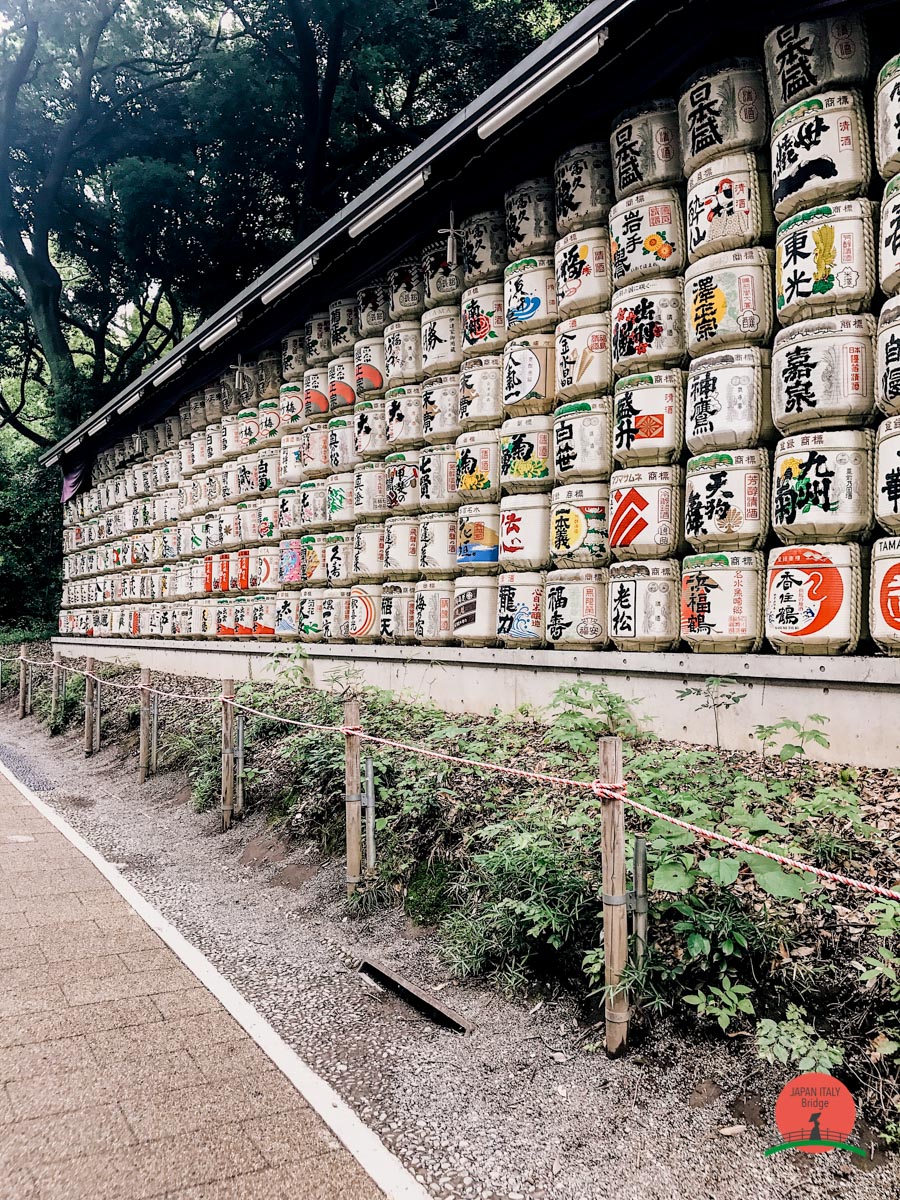
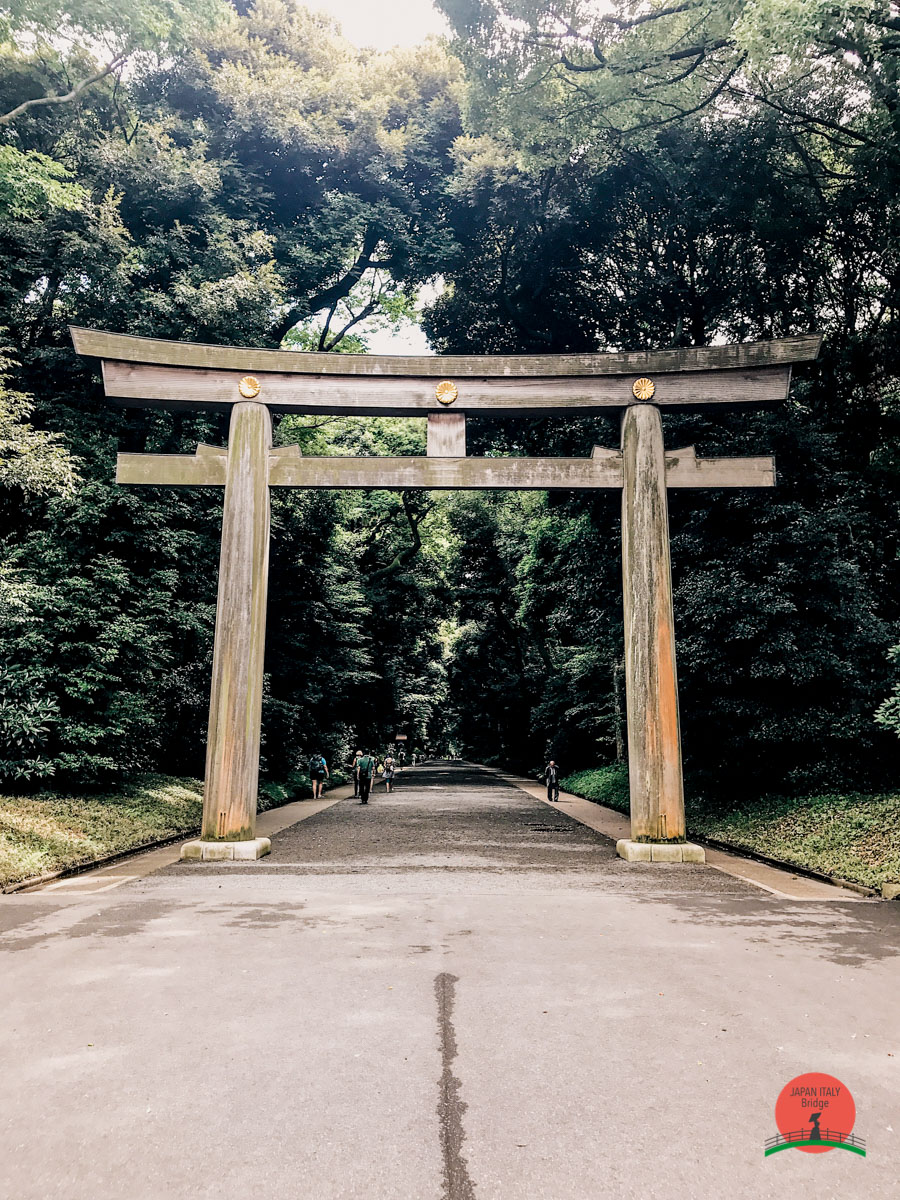
Inoltre, passeggiando lungo le vie interne del tempio e del parco, è possibile imbattersi in quello che io chiamo “muro del sake”, un muro composto da gigantesche botti di sake, un dono per l’imperatore da parte di tutte le sakagura del Giappone. Opposto a questo muro invece, è possibile trovare un muro di botti di vino, un dono per l’imperatore da parte di tutte le nazioni estere.
Inoltre, in preparazione del 100° anniversario nel 2020, lavori di ristrutturazione sono in atto per alcuni degli edifici del tempio, previsti fino all’ottobre 2019, quindi se pianificate di visitare Tokyo nel 2020 non potete assolutamente perdervi questa meta, fra una gara olimpica e l’altra!
Condividi:
- Fai clic per condividere su Facebook (Si apre in una nuova finestra)
- Fai clic qui per condividere su Twitter (Si apre in una nuova finestra)
- Fai clic qui per condividere su Tumblr (Si apre in una nuova finestra)
- Fai clic qui per condividere su Pinterest (Si apre in una nuova finestra)
- Fai clic per condividere su Telegram (Si apre in una nuova finestra)
- Fai clic per condividere su WhatsApp (Si apre in una nuova finestra)
- Fai clic qui per condividere su Reddit (Si apre in una nuova finestra)
- Fai clic qui per stampare (Si apre in una nuova finestra)






